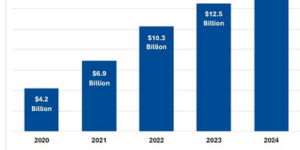A U.S. rule that would have wrapped title insurance into the total costs listed on a simplified mortgage-disclosure form was dropped by the Consumer Financial Protection Bureau after industry complaints.
The rule first proposed by the consumer bureau in July 2012 would have incorporated these costs into the calculation of the annual percentage rate on a simplified new mortgage disclosure form. The agency backed down after feedback suggested that the all-in APR, is the rule is known, “might have affected the types of loans available to consumers,” it said in an e-mailed statement today.
The APR feeds into calculations under other regulations that determine whether a mortgage is a higher-priced loan. If a higher APR pushes a loan into that category, lenders could be more vulnerable to lawsuits under a separate CFPB rule that takes effect in January.
“We applaud the CFPB for listening to our members and eliminating the ‘all in’ APR as it would not help consumers shop for a mortgage and could limit their settlement choices,” Michelle Korsmo, chief executive officer of the American Land Title Association, a Washington-based trade group, said in a statement.
Willard Ogburn, executive director of the Boston-based National Consumer Law Center, criticized the CFPB’s decision to step back from its initial proposal.
‘No Evidence’
“There is no evidence that better disclosure restricts access to credit,” Ogburn said at a CFPB field hearing in Boston where the new form requirements were introduced today. “Instead, it creates a more transparent and well-functioning market, which enables consumers to avoid abusive lenders.”
Fidelity National Financial Inc. of Jacksonville, Florida, is the top U.S. title insurer, followed by Santa Ana, California-based First American Financial Corp. The companies use their records to check that a seller is a property’s true owner and that it’s free from liens.
Mark Calabria, director of financial regulation studies at the Cato Institute, a research group that promotes free markets, said the change could have pressured the title industry’s profits.
Profit Pressure
“If title insurance is part of the calculation, then lenders can negotiate volume discounts and push down the price that title insurers can charge,” Calabria said. “Right now, the rules let the title insurers maintain a cartel.”
In New York trading today, Fidelity National shares were up 1 percent to $28.17 while First American shares were also up about 1 percent to $25.49.
Bank of America Corp. also concluded that the all-in approach would “negatively affect consumers by restricting their ability to obtain mortgage credit,” Larry Chattoo, assistant general counsel at the company, said at the Boston hearing.
The consumer bureau stepped back from the change as part of a final regulation it issued today that combines federally required mortgage disclosures into two simple forms, one that estimates the cost of a mortgage and another that details costs at closing.
The agency said it would “continue to study” the issue of consumer understanding of APR disclosures in connection with a required five-year review of regulations it writes. It will then “make improvements to those disclosures as necessary.”
Dodd-Frank Mandate
Under the 2010 Dodd-Frank Act, the agency was required to propose, though not complete, regulations combining and simplifying a thicket of federal disclosures under the Truth in Lending Act and the Real Estate Settlement Procedures Act.
Consumer bureau Director Richard Cordray said the forms will let consumers compare promised loan terms to actual costs at settlement.
“Our form makes that comparison very obvious,” Cordray said at the Boston hearing, which minimizes the potential for bait-and-switch increases in rates,” he said at the Boston hearing.
All lenders will be required to use the forms by Aug. 1, 2015. The agency didn’t exempt smaller lenders from the rules, despite protests that these banks have a close relationship with their customers.
Richard Hunt, president of the Consumer Bankers Association, which represents large banks, praised the CFPB’s no-exemption approach.
“There should not be different sets of standards which could lead to confusion and uncertainty amongst consumers,” he said in a statement. “Moving forward, we hope to see the CFPB apply this same methodology to other areas of their jurisdiction.”
–Editors: Anthony Gnoffo, Gregory Mott





















 1 in 6 Americans Report Feeling Stressed Every Day
1 in 6 Americans Report Feeling Stressed Every Day  Is State Farm General Too Big to Fail? Calif. Rate Hearing Concludes
Is State Farm General Too Big to Fail? Calif. Rate Hearing Concludes  Wildfire Losses Increasing But Still Small Compared to Hurricanes: KCC
Wildfire Losses Increasing But Still Small Compared to Hurricanes: KCC  No Escape From Tariffs — Not Even for D&O Liability Insurers
No Escape From Tariffs — Not Even for D&O Liability Insurers 

